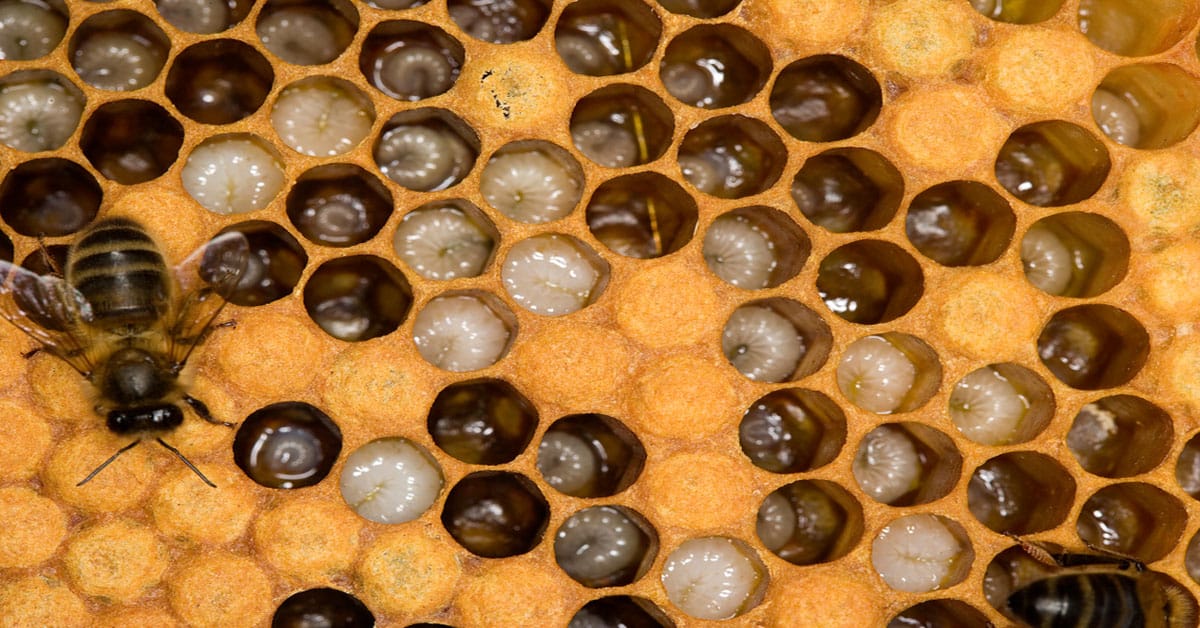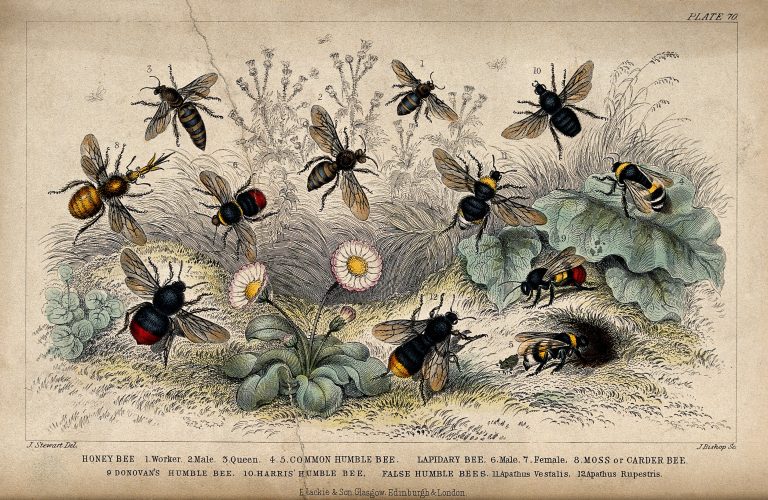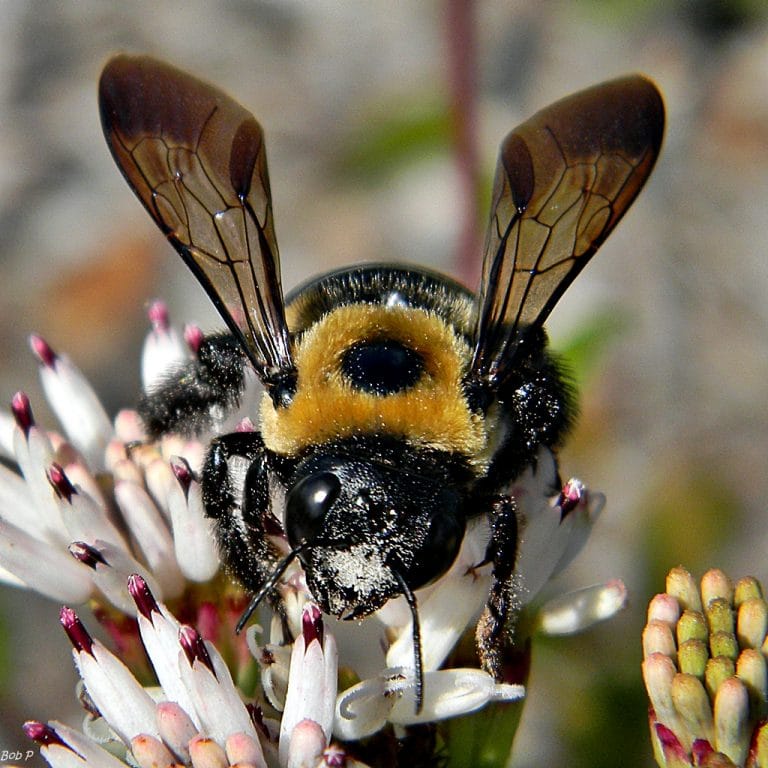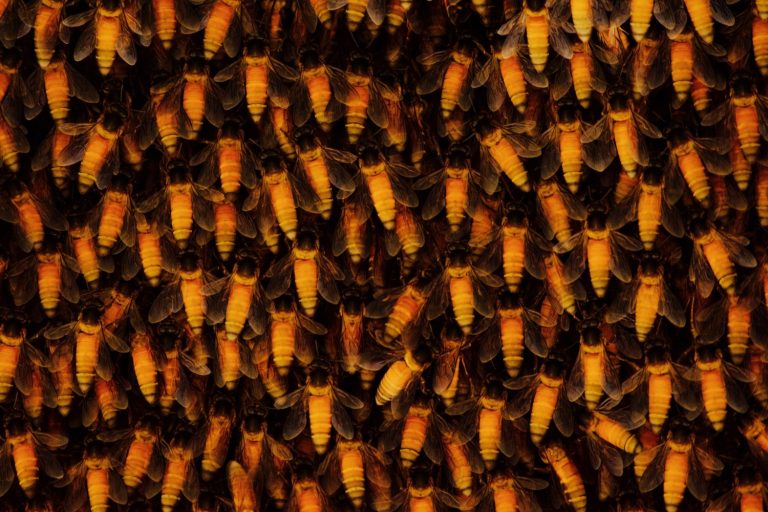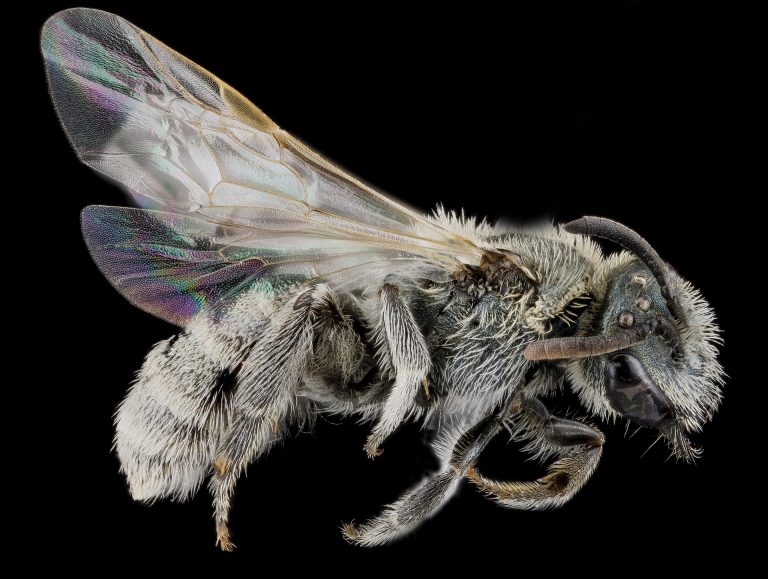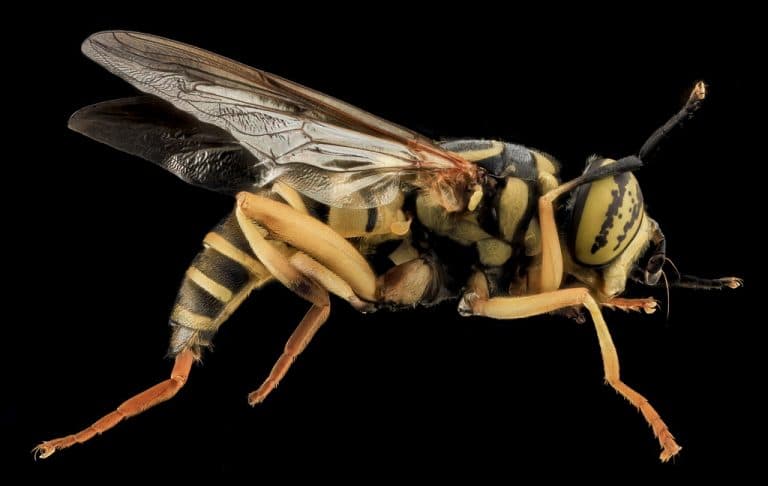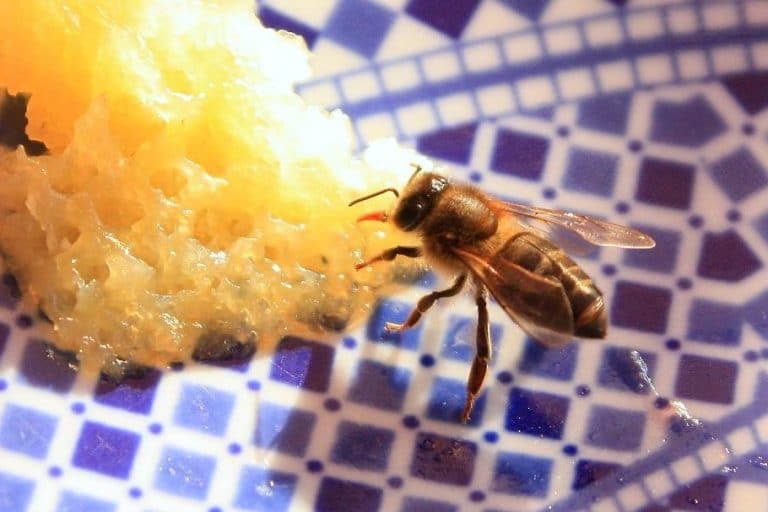Bee Larvae
The first stage a bee goes through after hatching from the egg and before becoming an adult is the larval stage. The bee larvae stage is an important part of bee development. The stages of development, from egg to bee, are identified by differences in body composition, dietary choices, and social behavior.
Did you know that workers, drones, and queens develop differently? In other words, they go through different developmental stages and are fed in various ways. The larval stage is where the bee life cycle begins. The eggs are only temporarily housed in these cells before becoming bee larvae.
Want to know more about these amazing and fascinating insects? In this article, we will go into greater detail about the bee larvae, their lifestyle, and their primary traits.
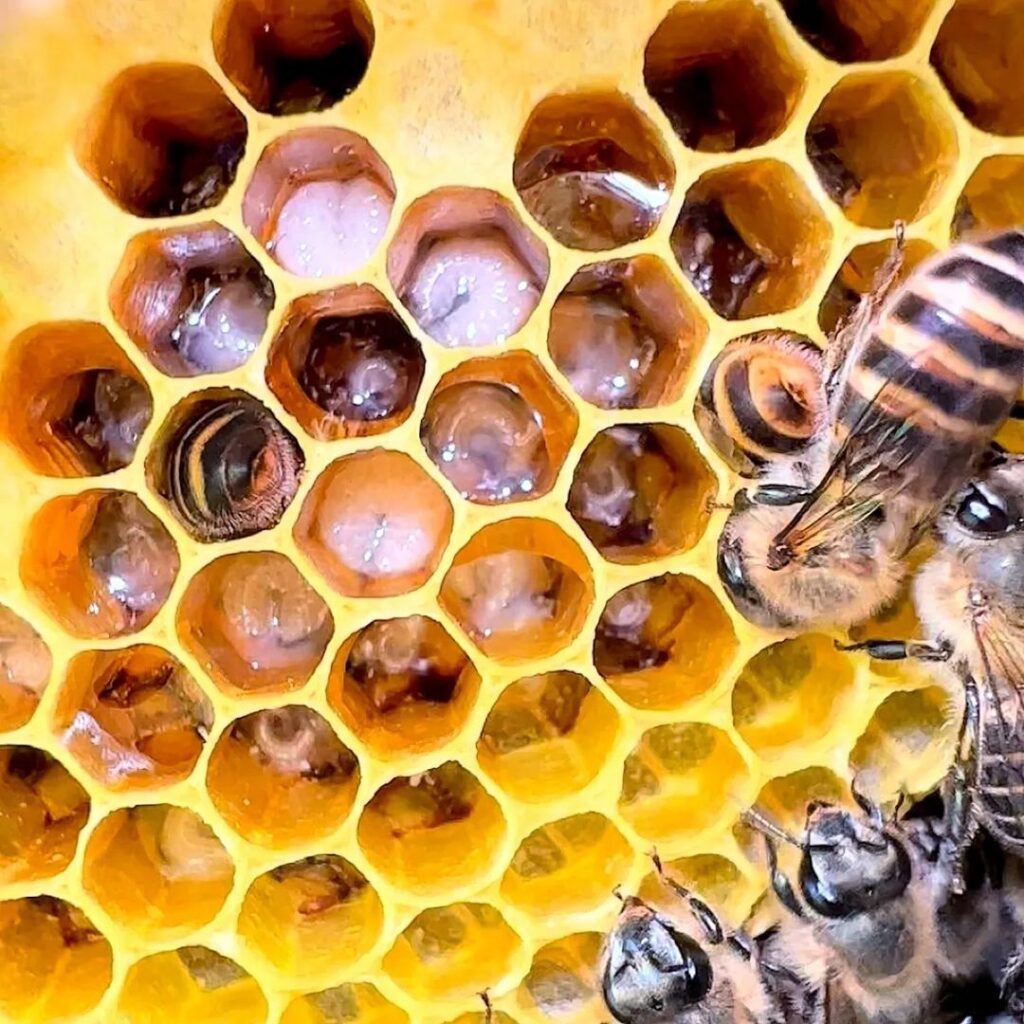
Bee development stages
Let’s quickly review the bee life cycle before we begin discussing the bee larvae. Bees belong to the Hymenoptera order, so they go through a metamorphosis before becoming adults. Bees are raised in larger cells than those found in typical honeycombs.
Honeybees go through four phases in their life cycle: eggs, larva, pupa, and adult. The length of the entire procedure varies between the honey bee species. On average, the queen needs 16 days, the worker bees 18-22 days, and the drones 24 days.
The main stages of the bee life cycle and development include:
- Egg stage. Everything starts when the queen lays eggs. It takes an average of three days. It is important to keep in mind that this period applies to all species, including mothers, drones, and worker bees.
- The larval stage is next.
- Pupae. This stage takes place for two days in the case of workers and queens, four days in the case of drones, and six days in the chrysalis stage before insects mature into adult insects.
- Adult. As soon as molting occurs, adult bees emerge. They are fed by the older bees for the first few days before beginning to eat honey and bee bread on their own.
Surprisingly, only the queens of a colony can produce fertile eggs. Queens have millions of sperm stored in their bodies and mate early in life. Despite having a five-year life span, they often only have two to three years to lay eggs.
Key Characteristics of the Bee Larvae
Adult bees and bee larvae are fundamentally different from each other. They look like little maggots. Babies are born blind. They can only feed and excrete waste while they are still larvae. Little to no movement is possible for the bee larvae. However, after emerging from their eggs, all larvae grow larger over time into larger organisms.
Some bee species have larvae that molt or shed their skin. At this stage, the bee larva can grow up to 1500 times its original size. During intestinal contraction, the insect absorbs liquid food, which helps it grow. The excretory organs are located in the middle intestine, which makes up the majority of the body.
The nervous system and genitalia are both closed, and the eyes and sense of smell are completely absent. On the bottom lip, spinning glands can be observed that the insect utilizes to spin a cocoon for the future.
Where Do Bee Larvae Live?
Bees are weak at this point in their development. A larva is unable to hunt for food or protect itself against predators. Like most insects, bees are protective of their offspring. Larvae are housed in nests or hives for protection. The kind and species of bee determine where the larvae dwell. Every species of female bees chooses certain locations to lay their eggs.
Colonies are home to social bee species. Worker bees take care of the larvae. This category includes creatures like honeybees who build hives. It’s interesting to note that the location of the egg’s lie can affect the larva’s size. When eggs are laid in older honeycomb cells, the resulting larvae are smaller. This is most likely a result of aged cells accumulating debris over time.
Some bumblebee species prefer to build their nests underground. There are additional types of bumblebee that prefer to live in bird boxes. Solitary bees lay their eggs in these individually constructed nests. After providing food caches, the mother bee departs. This guarantees that the larvae will have food when they hatch. The wood is where the eggs of Carpenter Bee females are laid.
Who Takes Care of the Larvae in the Colony?
Food delivery to the hive is the task of worker bees. The number of bees in a colony might reach 80,000. Therefore, worker bees are continually searching for food. Worker bees take care to supply food to the colony’s larvae, which includes lots of honey and pollen to keep the larvae growing. They also look after the larvae until they mature into adult bees.
Most people only see worker bees. These bees are females who have not reached sexual maturity. Workers build and guard the hive; clean; circulate air by beating their wings, and carry out a variety of other social duties in addition to foraging for food.
Before the larvae become adults, worker bees can make up to 10,000 visits to the maturing larvae.
What Do Bee Larvae Feed On?
Bee larvae’ diet has a big impact on bee development. As mentioned before, worker bees are responsible for providing proper nutrition for bee larvae, and they are mostly focused on getting different kinds of food.
Along with other factors, diet does affect how long the larval stage lasts:
- The larvae will grow more rapidly the better their food is.
- Queens grow more quickly than employees or drones because high-quality food promotes rapid growth. Simply put, they have more of a better quality of food.
- Compared to the diet of queen bees, worker bees consume a greater volume of food, which aids in their growth, but the quality is lower.
Although diet has a bearing on larval growth, it is not the only aspect of a healthy bee life cycle. Even though they consume a wide variety of foods, here is some of the food that workers provide for feeding bee larvae:
- Honey
Bees that make honey store it for a variety of purposes, including feeding the larvae. Before feeding it to larvae, honeybees dilute the stored honey by adding water. In their nests, bumblebees store honey in nectar pots. To feed the larvae, they dip into these nectar pots.
- Bread
Bee larvae consume bee bread in a variety of social species. It is created from pollen and altered by the bee. To gather pollen, worker bees go far from the nest or hive. After that, the pollen is brought home to be treated.
- Pollen
Some female solitary bees gather pollen for their larvae. Among them are carpenter bees. The female will collect pollen from flowers and then head back to her nest, made of wood. She places an egg into a tightly rolled ball of pollen. She will carry on doing this until there are no more eggs in the chamber. The pollen balls provide food for the larvae once they hatch.
How Long Does the Bee Larval Stage Last?
Bee larvae develop at various rates, and several factors affect how quickly a bee becomes an adult. These factors include:
- What kind of species are they? – The larval stage lasts, on average, six days. However, it’s shorter for the queen, longer for the worker bees, and longest for the drones.
- How does temperature affect it? – The procedure could take a little bit longer if the temperature dips after an egg is laid.
- What is their diet? – When larvae are fed the royal jelly diet of the queen, they mature more quickly.
Worker bees will wax-seal the larva’s cell after the larval stage, and the caterpillar will then start to spin a cocoon and enter the pupal stage.
Interesting Facts About Bees
- Only worker bees, who are always female, possess stingers. All drones are male, and only the queen is able to reproduce.
- Honey bees will visit between 50 and 100 flowers while traveling up to 3 kilometers from the hive in quest of nectar and pollen.
- The lifespan of the queen is five years. During the summer, when she may produce up to 2,500 eggs each day, she is most active.
- The only social insect that has been partially tamed by humans is the bee.
Summary
Overall, no one can deny that bees are amazing creatures with distinct characteristics and lifestyle choices. The caste is established when a bee lays its eggs. The larval stage is the first stage of the bee’s life after hatching, and how the larva is fed and cared for depends on whether it will become a queen, a worker, or a drone in the future.
The larvae often receive a lot of food, along with essential nutrients for complete development. Healthy newborns are produced while preserving the required microclimate, and they rather rapidly start carrying out their specific tasks within the bee family.

Nato is a content writer and researcher with a background in psychology who’s eager to explore the wonders of nature. As a travel enthusiast and animal lover, she hopes to inspire others to discover and cherish the beauty and importance of the natural world.

